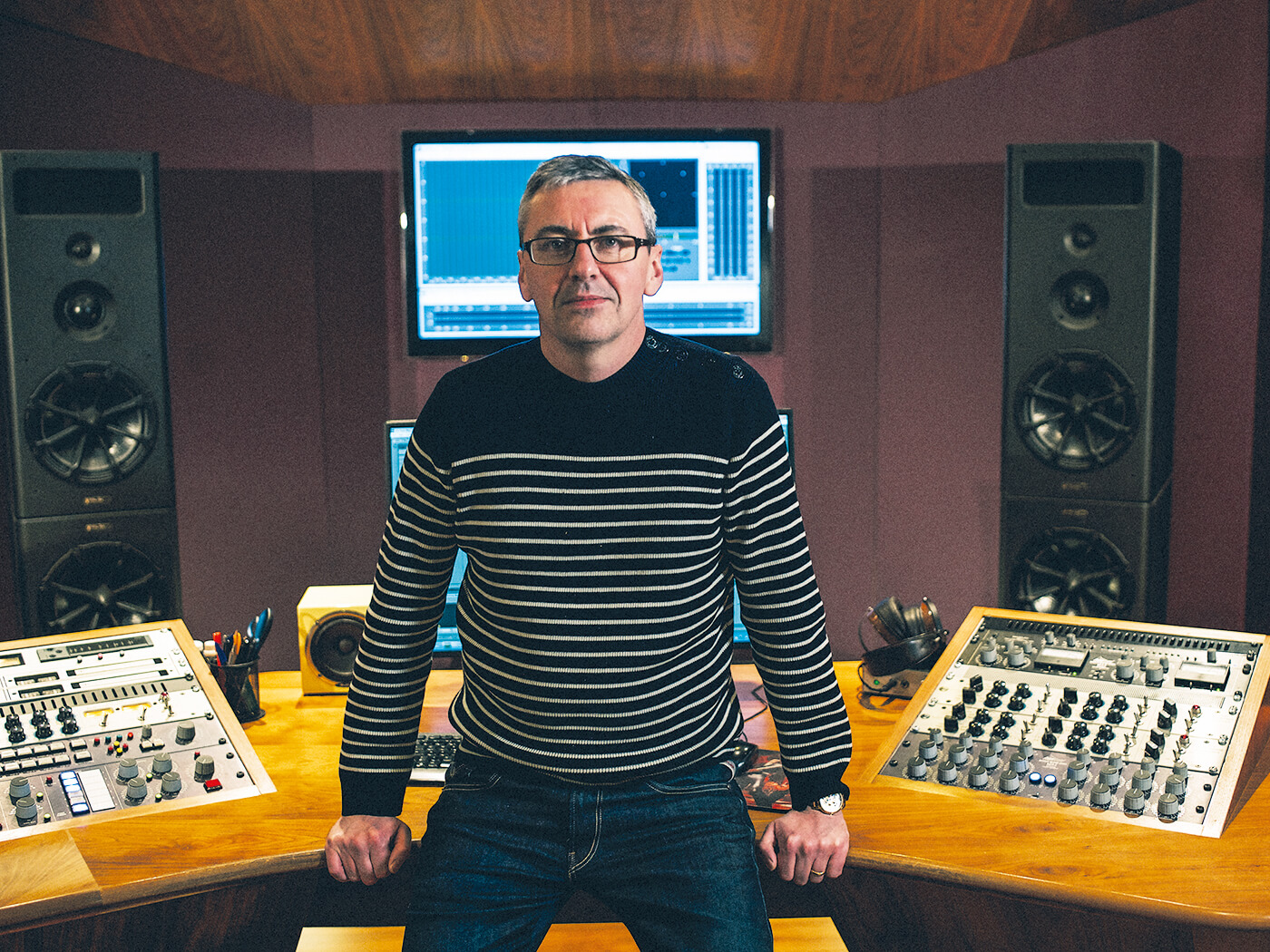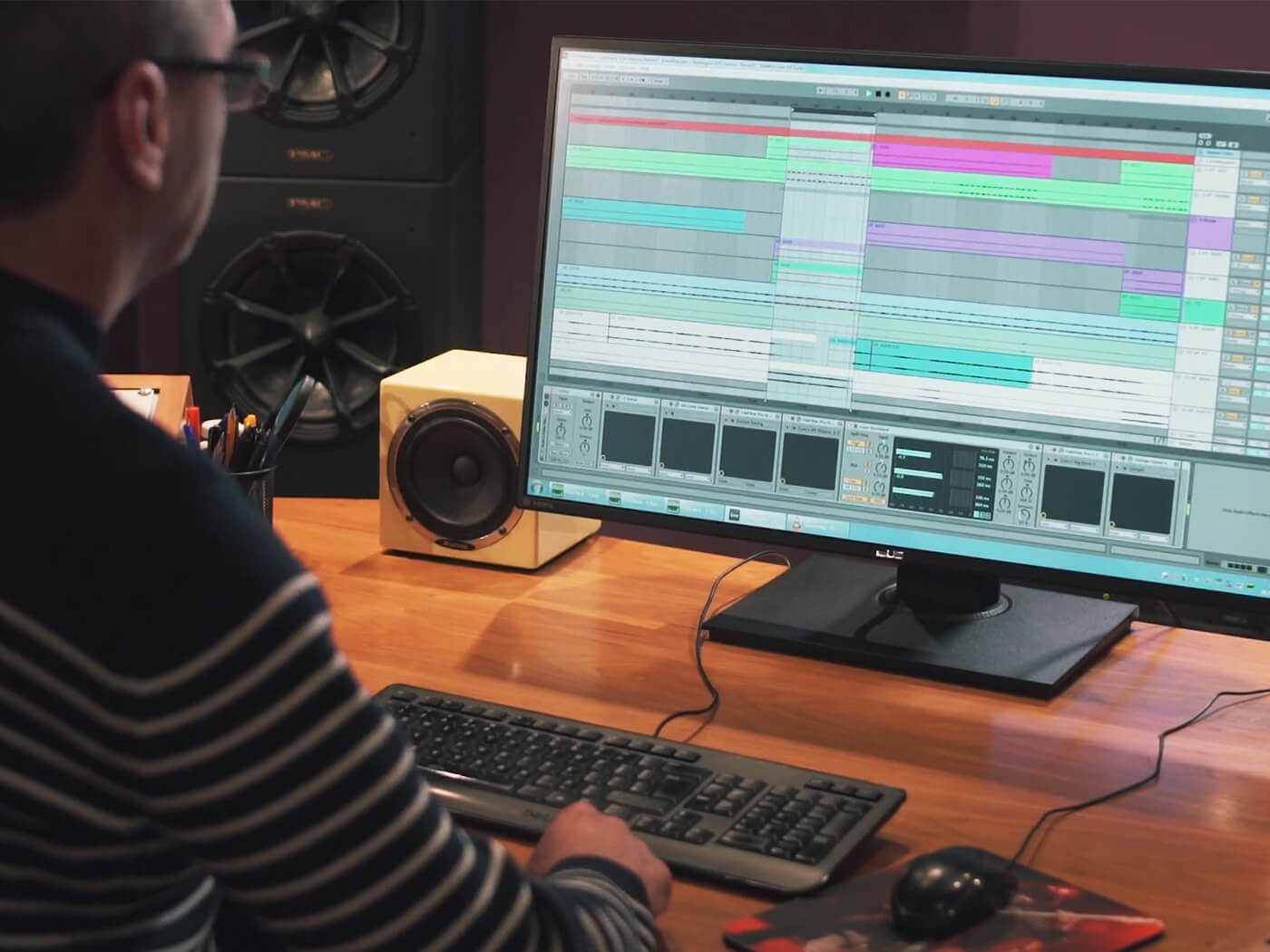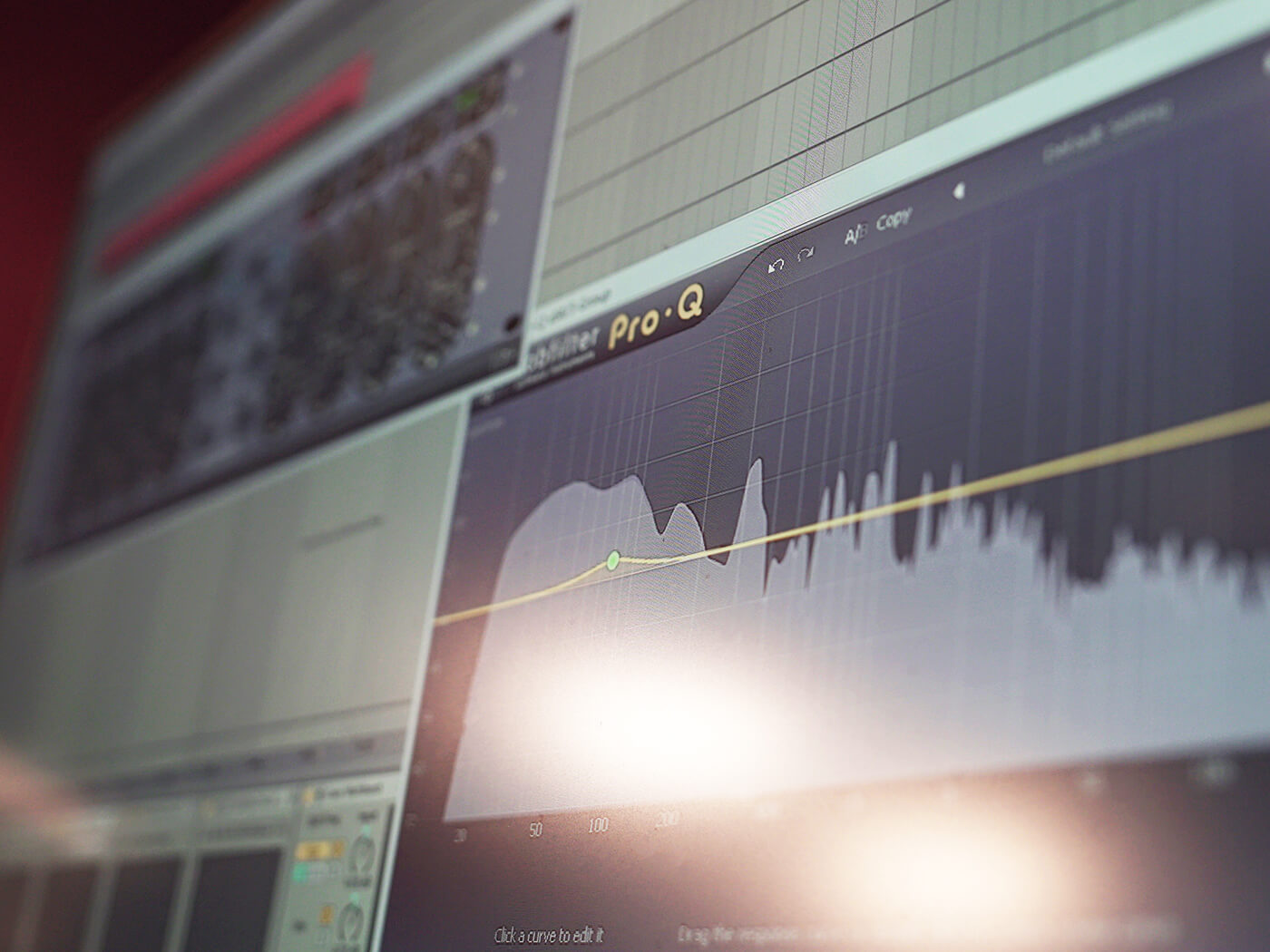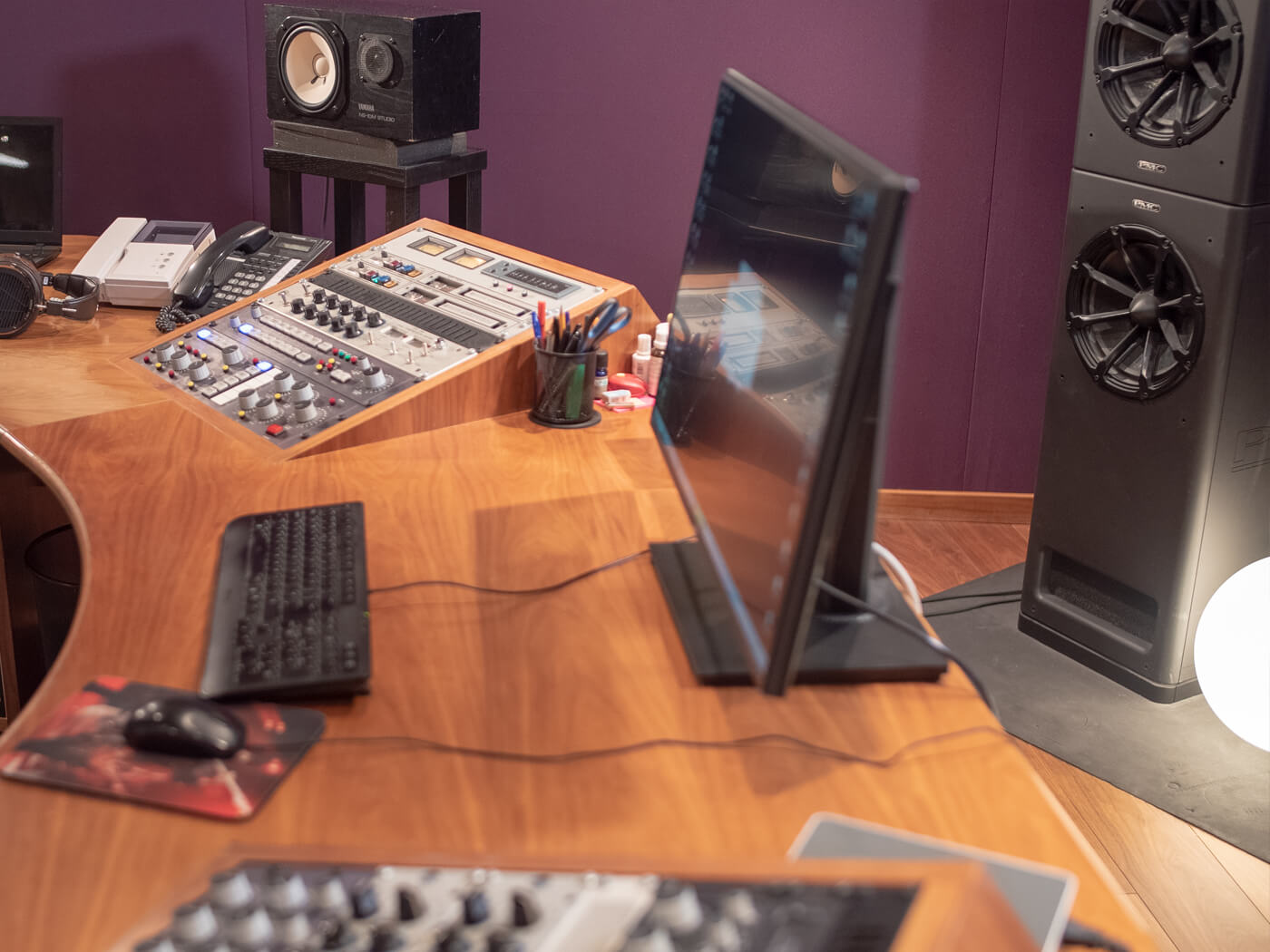Stem mastering can solve mix issues: Cass Irvine of Wired Masters
It’s common for a mastering engineer to EQ and limit a track to ready it for public consumption. But what happens when a mix has deeper problems? As Cassian Irvine of Wired Masters explains, the solution might be stem mastering.

The role of a mastering engineer is to put stereo mixes through expensive, esoteric hardware, alter the EQ and make the track louder, right? Wrong. At Wired Masters – a London mastering house established in 2003 – this is far from the case. Co-founder Cass Irvine has a role that’s one part producer, one part mixer and one part mastering engineer. It’s this breadth of expertise that is part of the secret to the company’s success – Wired boasts high-profile clients such as Galantis, Afrojack, Camelphat, Steve Aoki and Tiësto.
“When it comes to dance music, we want a loud, clean master most of the time,” says Irvine. “If the artist has a great-sounding track, my job is made very easy, because I’ll pretty much just make it loud.”
When there are issues with the mix, things become more difficult. This is when the judgement of the mastering engineer is critical. “The vocals might be overly compressed and too sibilant, and that’s something that’s very difficult to fix during mastering. It’s something that needs to be fixed in the mixing stage,” Irvine explains.
Stem the flow
Given the restrictions imposed by mastering a stereo file and the limitations of most home-studio listening environments, it stands to reason that mastering engineers such as Irvine are increasingly taking on an intermediate role between the mixer and mastering engineer.
“The difference between stereo mastering and stem mastering is that with stem mastering, you’ve got a number of stems and the track is broken down into various components,” Irvine explains. “For example, a simple stem master might be a kick, percussion, bass, synths, vocals and effects.
“With stereo mastering, if you want to bring up the vocals, there’s not much you can do. You could bring up the midrange with the EQ but, of course, you’ll bring up other sounds like synthesisers. It’s an imperfect solution, really. I think it’s much better to fix it in the mix or with a stem master, so that’s why we do a lot of stem masters these days,” he says.
“People get quite fixated on small things and cannot see the bigger picture. It’s an easy thing to do when you have too many options available.”
The principles of stem mastering can be applied just as easily to mixing – because, essentially the process is a form of mixing. The critical difference is that with stems, you condense down a track that might contain hundreds of sounds into a more manageable project.
There are many benefits, but the biggest one is perhaps the removal of option paralysis. “People get quite fixated on small things and cannot see the bigger picture. It’s an easy thing to do when you have too many options available. When I’m listening to stems, I will listen to whether the bass is sounding right or the drums sound good, but I’m probably not listening to the decay of the snare drum,” says Irvine. “So stem mastering is getting a second pair of ears, and that’s going to benefit the mix engineer and the artist.
“Of course, the sounds that you choose are important. If the kick and the bass are sounding right, then everything else should hopefully fall into place. I think of those as the skeleton of the track. If those are sitting and sounding good with each other, you can get those synths and vocals sounding good. This is particularly relevant at the mixing stage as well.”
If those fundamentals aren’t working, then Irvine will either ask the producer/mixer to revisit the kick and bass, or roll up his sleeves and make the changes himself.

Second opinions
As an artist, producer or mixer, if you’re not sure whether your track is ready for mastering, then you have a few options. “Most mastering engineers would be very happy to critique your track and give you some feedback,” says Irvine. “That might be: ‘Your vocals are too low in the mix,’ it might be: ‘The vocals are too sibilant,’ or it might be to suggest adding a lot of 200Hz on your bass to thicken it up. So that’s a good thing to do, and the feedback you’ll get from your mastering engineer should tell you quite a lot about whether that’s a good person to work with. You can also ask a music-making or DJ friend for some constructive criticism.”
“Drop the volume of your reference to the same level as your track and compare them.”
If you’re more of a lone wolf or want to hone your mixing skills, you can critique the track yourself. The way to do this is with reference tracks. “If you’re making future house and trying to make a track like Lucas & Steve, get a Lucas & Steve track, drop the volume to the same level as yours and compare them,” Irvine continues.
“Ask yourself if they’re in the same ballpark, or if they’re worlds apart. If they are worlds apart, perhaps mastering is not an option yet and you’ve got to go back to the drawing board and have a look at your mix again.”
Loudness war
It’s not just the mix of a track that has a knock-on effect on the mastering. The arrangement is also a critical factor, and it’s something that is easy to overlook during production. “Some tracks I can get loud very easily, but certain tracks, you can’t get that loudness for whatever reason. It might be a kick drum, a vocal and a piano all hitting on one beat, for instance,” Irvine says.
“Don’t worry too much about level.”
“That can be a struggle at times, so I’ll have to use various processors and just see what sounds best,” he continues. The Wired Masters engineer has plenty of tricks up his sleeve, but one is to use the Sonnox Oxford Inflator, a plug-in that increases perceived loudness without adding the pumping artefacts of compression and limiting.
Getting tracks to sound loud is very much a part of the gig for Irvine. And for him, that’s no bad thing. “Certain genres need to be loud, and they sound good for it,” he says. Although he does caution against becoming too single-minded about getting a master to be loud: “Don’t worry too much about level. When I get given a track, and the reference track is incredibly loud, I drop the reference track by 2, maybe even 3dB. I do my master, try to get it sounding sonically the same as the reference track. Just concentrating on the EQ-ing to make sure it sounds good. When I’m happy with that, I look to trying to get those extra 2 or 3dBs again. Hopefully, you can push the limiter a bit more, and you’ll get that, but if it’s not working, you’ll know when to leave it.”

Soft touch
Even when it comes to stereo mastering, Irvine’s approach is still software-based, using familiar tools that are within reach of the everyday music-maker, such as Ableton Live. Live allows him to split a stereo track into its different sections – intro, outro, breakdown, drop – and process these sections differently.
“With a drop, I might have a very resonant synth I want to duck down with a multi-band compressor or an EQ. I might want to push the bass a little bit, but in a breakdown, I might want to do something else. So, being able to process each element is a big advantage over using analogue.”
“I use a lot of plug-ins from Soundtoys, FabFilter, Waves and UAD, but there are about 15 to 20 that I go back to again and again.”
For dance music, in particular, maximising levels is a significant part of the process. So having quick alternatives that you can address on a section-by-section basis is a considerable advantage. “I’ll try using my standard mastering chain with clipping, for example. If that’s not working, I might copy the channel down, tweak a few parameters, open up the release and see how that sounds. Is that sounding better? If it’s not, I can try something completely different. I end up with multiple channels with different limiter settings and seeing which one sounds better. That’s something you just can’t do with analogue.”
The quality of plug-ins is also a big factor, too: “It’s very difficult to tell the difference between them and their analogue counterparts,” says Irvine. “I use a lot of plug-ins from Soundtoys, FabFilter, Waves and UAD, but there are about 15 to 20 that I go back to again and again.” Among these are the Waves SSL G-Master Buss Compressor, the FabFilter Pro-Q, the FabFilter Pro-L 2 and iZotope’s Ozone 4.”
Studio essentials
Naturally, Irvine’s room is replete with top-end hardware: “I’ve got a Maselec mastering console so I’ll use that in conjunction with the plug-ins,” he says. However, he’s firm in his belief that the most important elements in a studio are the space itself and the monitors: “You’ve got to have a flat-sounding room and be able to hear what you’re doing. There’s no point having a £5,000 compressor if you can’t accurately hear what it’s doing!”
Irvine has a pair of PMC MB2 monitors that are his main speaker reference. “You can play them loud, you can play them quietly, and they still produce that low end. You really can hear the smallest details of every change you do – a half-dB reduction with an EQ, you can hear it on those,” he says.
“When I start mastering, I don’t think about whether it will sound good on an iPhone.”
But Irvine still has time for Yamaha’s much-loved monitoring stalwart: “Once a track is mixed and mastered, I will have a listen to see how it sounds on the NS10s, because it’s a good indication of how it would sound on the radio or on cheap earbuds and speakers. They don’t have a great low-end response, but they do well for the midrange.”
Referencing between the two systems is important for getting a balance, too: “One thing I do find is that vocals mixed on the PMCs will tend to come out a bit loud on the NS10s. So I’ll have to drop the levels while I’m on the NS10s,” he says. For a final test, Irvine also uses a set of Audeze LCD-2 headphones that serve a very particular purpose. “They’re great for picking up distortion that might not be too apparent on the PMCs.”

Translation
Another key aspect of mastering is ensuring that the mastering track will translate between various different systems. But this isn’t something that Irvine gets too fixated on. “When I start mastering, I don’t think about whether it will sound good on an iPhone. I try to get it to sound good on the PMCs and NS10s. If you can get a good mix with the reference tracks, it will translate well into every system.”
However, sometimes you have to accept that no matter how skilled you are, there will be playback systems that can’t convey every nuance of a master. “For some tracks, for example, a trap track, where you have a chippy kick and a bass coming out at 50Hz, it will sound great on the PMCs – but will it sound good on an iPhone? Probably not, because you’re not going to hear that bass. There are limitations to every genre of music; that’s something you have to be aware of.”
Find out more about Wired Masters at wiredmasters.co.uk.